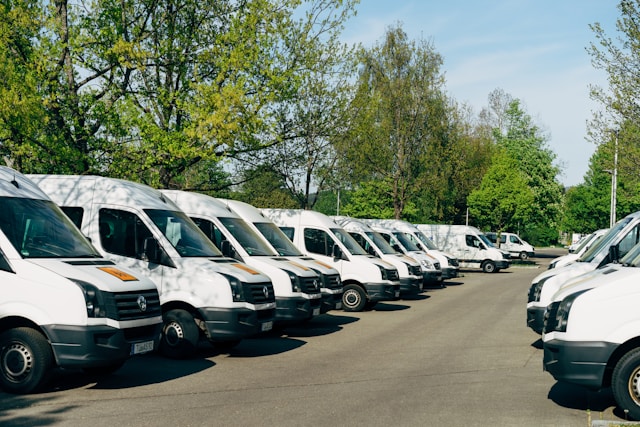Modern tradies rely on their vans as mobile workshops, and having the right electrical setup can make the difference between a productive workday and constant frustrations. Whether you’re a plumber, builder, or any other trade professional operating in Auckland, upgrading your van’s electrical system can transform how you work on site and travel between jobs.
Essential Power Inverter Systems
Installing a quality power inverter stands as one of the most crucial electrical upgrades for any tradie van in Auckland. A pure sine wave inverter, typically ranging from 1500W to 3000W, allows you to run standard 240V tools and equipment directly from your van’s battery system. This means you can operate power tools, charge batteries, and even run small appliances without needing to find a power point or carry a generator to every job site.
The choice of inverter size depends on your specific trade requirements and the tools you use most frequently. For lighter electrical loads such as charging drill batteries and running LED work lights, a 1500W inverter provides ample power whilst remaining cost-effective. However, if you regularly use angle grinders, circular saws, or other high-draw equipment, investing in a 2500W or 3000W inverter ensures you won’t experience power dropouts during crucial work moments.
Professional installation of your inverter system is vital for safety and optimal performance. The system needs proper earthing, appropriate circuit breakers, and correctly sized cables to handle the current draw safely. Many Auckland tradies have discovered that a professionally installed inverter pays for itself within months through increased productivity and reduced downtime searching for power sources.
Dual Battery Systems with Smart Management
A dual battery setup provides the foundation for all other electrical upgrades in your tradie van. This system involves adding a secondary deep-cycle battery that’s isolated from your starter battery, ensuring you’ll never be stranded with a flat battery after using power tools all day. The auxiliary battery powers all your work equipment whilst the main battery remains dedicated to starting your van.
Modern dual battery systems incorporate DC-DC chargers that optimise charging from your alternator whilst driving around Auckland’s varied terrain. These smart chargers can handle the unique requirements of different battery types, whether you choose traditional AGM batteries or invest in lithium options. They also protect against overcharging and ensure maximum battery life, which is particularly important given Auckland’s temperature variations throughout the year.
The placement and ventilation of your auxiliary battery require careful consideration. Many vans benefit from under-floor mounting to save cargo space, whilst others suit battery boxes in the rear compartment. Proper ventilation prevents gas buildup and heat accumulation, especially important during Auckland’s humid summer months when batteries work harder to maintain charge.
LED Lighting Conversions and Work Lights
Upgrading to LED lighting throughout your van delivers immediate benefits in power consumption and visibility. Interior LED strips or panels consume a fraction of the power of traditional bulbs whilst providing superior illumination for finding tools and materials in your van. This becomes particularly valuable during Auckland’s winter months when you’re often starting and finishing jobs in darkness.
External LED work lights mounted on your van’s roof or rear doors transform night-time and early morning job capabilities. Magnetic or permanently mounted LED flood lights can illuminate entire work areas, making emergency callouts and overtime work safer and more efficient. Choose lights with adjustable brackets to direct illumination exactly where needed, and consider models with remote controls for convenient operation.
Under-body and compartment lighting deserves equal attention in your electrical upgrade plan. LED strips in tool drawers, storage compartments, and under shelving make equipment location quick and easy. Motion-activated lights in frequently accessed areas save battery power whilst providing instant illumination when needed, proving especially useful when your hands are full of tools or materials.
USB Charging Stations and 12V Outlets
Multiple USB charging points throughout your van keep essential devices powered throughout the workday. Installing a dedicated USB hub with quick-charge capabilities ensures phones, tablets, and other digital tools remain operational for invoicing, navigation, and client communication. Position these outlets strategically near your driving position and work bench areas for maximum convenience.
Additional 12V outlets expand your van’s versatility for running specialised equipment. From portable fridges for lunch and drinks to 12V air compressors for pneumatic tools, these outlets eliminate the need for adapter plugs and reduce strain on your inverter system. Installing weatherproof 12V outlets on your van’s exterior provides power options for outdoor work without running extension leads through doors or windows.
Smart USB and 12V installations include voltage displays and individual switches for each outlet. This allows you to monitor power consumption and disconnect unused circuits to preserve battery life. Some Auckland tradies opt for colour-coded outlets to distinguish between always-on circuits and those controlled by ignition or manual switches.
Solar Panel Integration
Adding solar panels to your van’s roof provides sustainable power generation that’s particularly effective given Auckland’s reasonable sunshine hours. A 200-300W solar setup can maintain your auxiliary battery’s charge during the workday, extending runtime for tools and equipment. This proves invaluable for tradies who spend extended periods on single job sites or work in remote Auckland locations.
Flexible solar panels conform to curved van roofs and weigh significantly less than rigid panels, making them ideal for vehicles that need to maintain payload capacity. These panels withstand Auckland’s occasional hail and strong winds whilst providing consistent power generation. Pairing solar panels with an MPPT charge controller maximises energy harvest even during cloudy conditions.
The integration of solar requires careful planning of cable runs and connection points. Waterproof entry glands prevent leaks whilst maintaining your van’s weather resistance. Many tradies find that solar panels pay for themselves within 18-24 months through reduced alternator wear and improved battery longevity.
Important Considerations for Van Electrical Upgrades
Before committing to electrical upgrades, assess your van’s alternator capacity and wiring infrastructure. Older vans may require alternator upgrades to support additional electrical loads, particularly when running multiple high-draw systems simultaneously. The existing wiring loom might also need reinforcement with heavier gauge cables to safely carry increased current loads.
Compliance with New Zealand electrical standards is non-negotiable for van modifications. All 240V installations must meet AS/NZS 3001 standards and be completed by licensed electricians. This ensures your insurance remains valid and your van passes its Certificate of Fitness inspections. Documentation of all electrical work also adds value when selling or upgrading your vehicle.
Consider future expansion when planning your electrical system. Installing a distribution panel with spare capacity allows for easy addition of new circuits as your business grows. Similarly, choosing components that can be upgraded or expanded saves money compared to complete system replacements down the track.
Maintenance and Safety Features
Regular maintenance of your van’s electrical system prevents costly failures and dangerous situations. Battery terminals require periodic cleaning and tightening to maintain good connections, whilst fuses and circuit breakers need testing to ensure they’ll protect your equipment when needed. Establishing a monthly inspection routine catches problems before they impact your work.
Installing battery monitoring systems provides real-time information about your electrical system’s health. These displays show voltage, current draw, and remaining capacity, helping you manage power usage effectively. Some systems include smartphone apps that alert you to problems even when you’re away from your van, providing peace of mind during Auckland’s unpredictable weather events.
Safety equipment such as fire extinguishers rated for electrical fires, emergency disconnects, and proper signage for high-voltage areas protect both you and others who might work on your van. Investing in quality components from reputable suppliers might cost more initially but provides reliability and safety that budget alternatives can’t match.
Need Help With Your Tradie Van Electrical Upgrades?
Upgrading your tradie van’s electrical system transforms it into a more efficient mobile workshop that supports your business growth. From power inverters and dual battery systems to solar panels and LED lighting, these improvements boost productivity and professional capability.
As Auckland’s specialist auto electricians, Eurosparx can design and install the perfect electrical system for your tradie van. Contact our experienced team today by calling 09 218 7789 to discuss your van’s electrical upgrade requirements.


